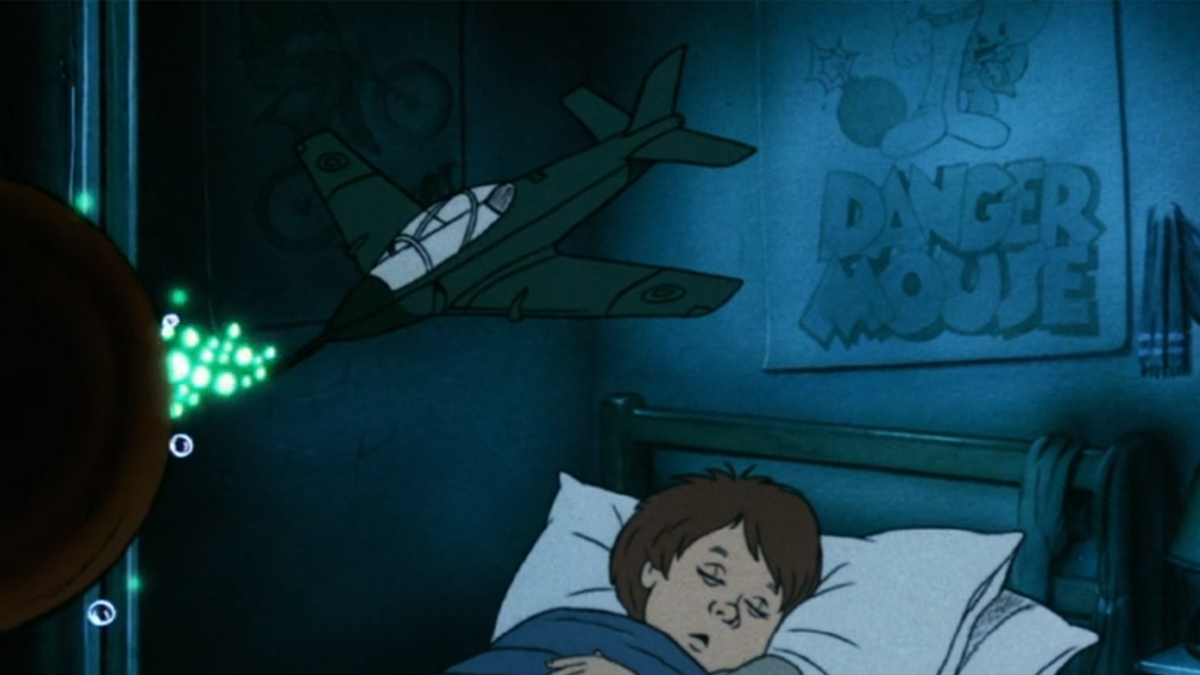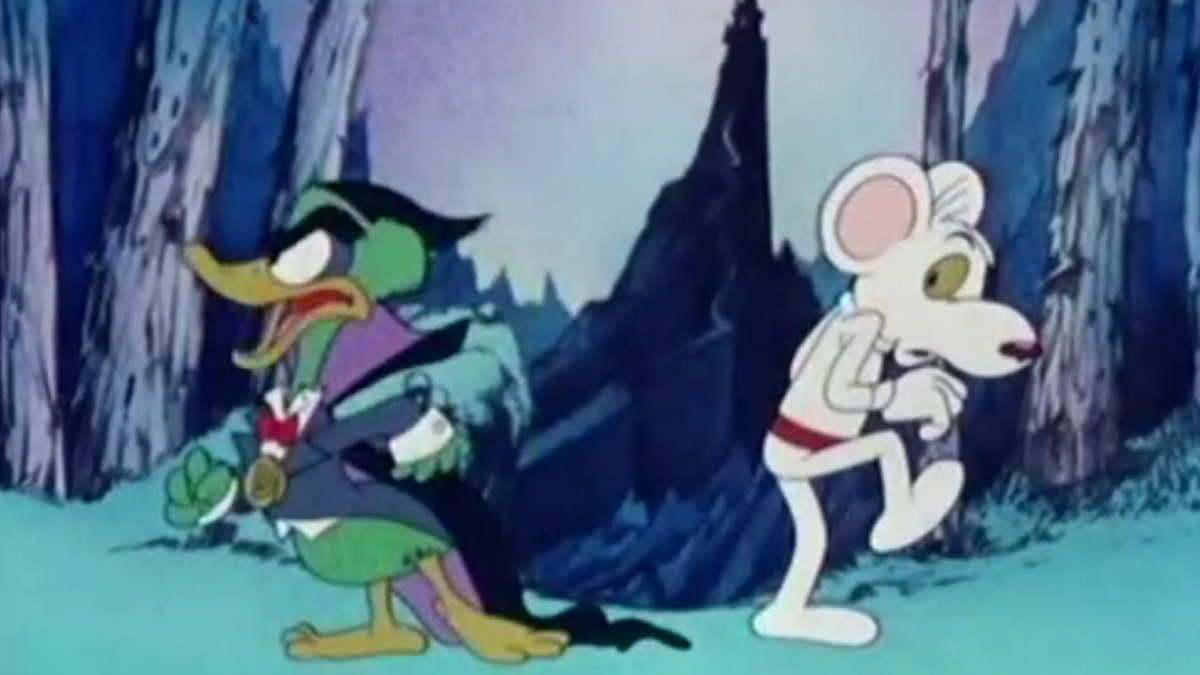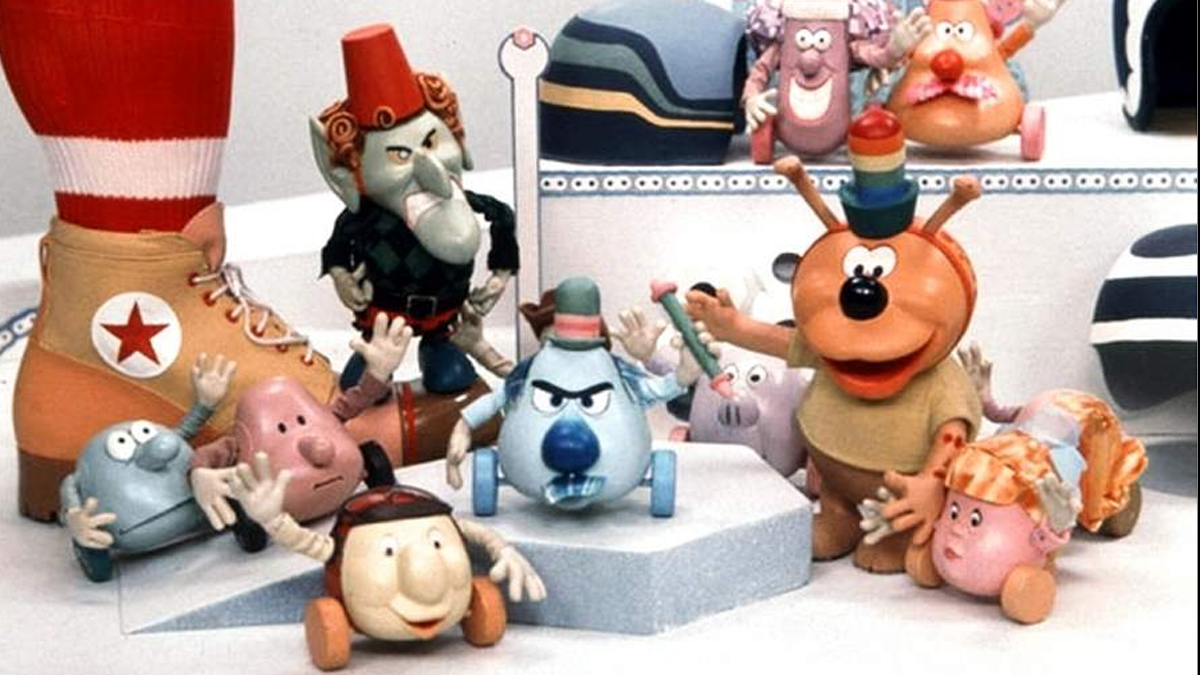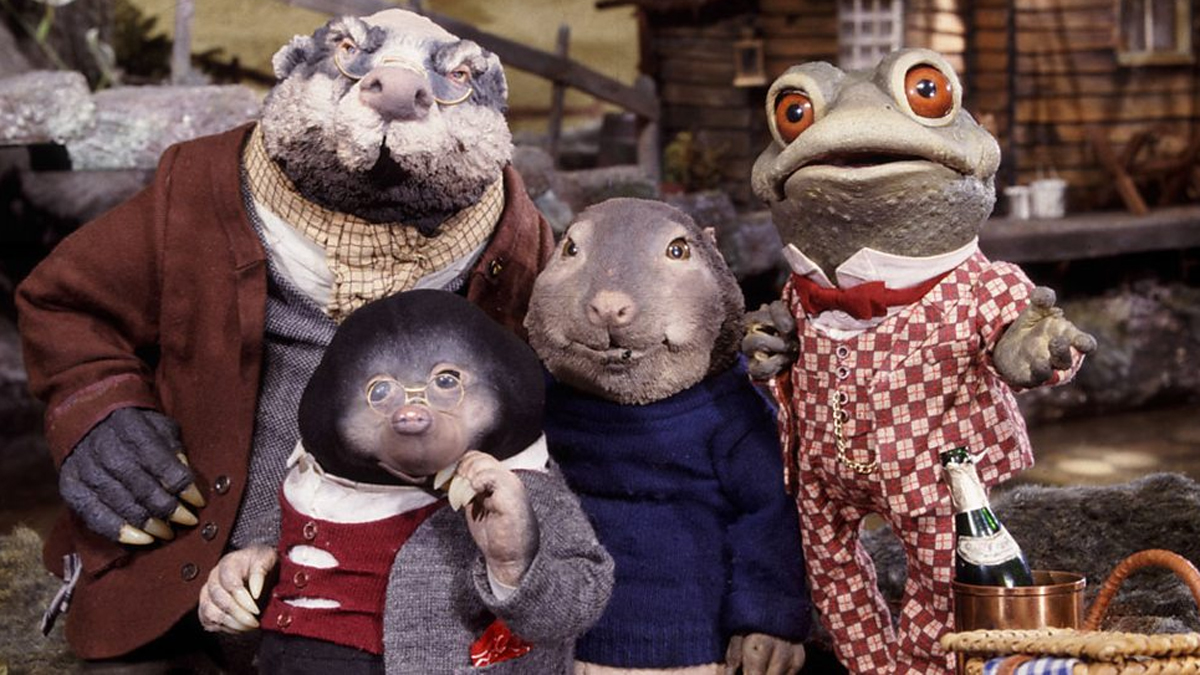21 charming things to know about Cosgrove Hall Films
The makers of Danger Mouse, Count Duckula, Chorlton And The Wheelies and many more - we salute Cosgrove Hall Films…
Brian Cosgrove and Mark Hall worked together for forty-five years, in which time they made a huge number of cherished animated children’s television. Danger Mouse, The Wind In The Willows, Count Duckula, Chorlton And The Wheelies, Jamie And The Magic Torch, feature film The BFG… if you were a child in Britain in the seventies and eighties, you grew up on Cosgrove Hall’s imagination.
After art college, the pair worked as graphic artists at Granada Studios, and went on to produce animated segments for ITV’s Rainbow. They founded their own animation company, Stop Frame Productions in 1969, then started Cosgrove Hall Films in 1976. The company continued for over thirty years until its closure in 2009.
Were it not for Mark Hall sadly passing away in 2011, he and Brian Cosgrove would have continued to work together on new children’s animations, having had plans to do so even after retirement. Between the two of them and their roster of talented artists, they built what was at the time one of Europe’s largest animation studios and made the North West a creative hub for UK puppet makers, animators and 2D artists.
By way of tribute, here are some charming things to know about the pair and their work.
1. Early on in his career, Brian Cosgrove pitched an animated children’s series to the BBC, which they greed to buy but wanted the scripts to be developed further. To work on them, the BBC introduced Cosgrove to actor and presenter Eric Thompson, the English-language adapter and presenter of The Magic Roundabout (and, incidentally, father to actor-director Emma Thompson). At the precise time of their meeting, Eric Thompson happened to be scratching around for an English name for The Magic Roundabout’s snail, and when he met Cosgrove the perfect one presented itself: Brian. See Cosgrove tell the story himself from 3:45 in this video
2. Cosgrove Hall’s first television series, Chorlton And The Wheelies, was named after the Manchester suburb of Chorlton-cum-Hardy, where the studio’s headquarters, converted by an old tobacco and confectionary warehouse, were based. “There’s a sort of humour in the name Chortlon-cum-Hardy,” David Jason in his 2012 BAFTA Children’s TV special award presentation speech quoted Brian Cosgrove as having told him, “it rolls off the tongue, you can get quite a lot of laughs out of that.”
3. The original site of Cosgrove Hall Studios on Albany Road in Chorlton is now a residential development called Cosgrove Hall Court. Built in 2013, the flats feature a plaque paying tribute to Cosgrove Hall productions Danger Mouse, Chorlton And The Wheelies, Count Duckula, The Wind in the Willows, The Pied Piper of Hamelin and The BFG.
4. In Cosgrove Hall’s 1989 feature film of Roald Dahl’s The BFG, when the BFG and Sophie are out distributing dreams to the children of England, the young boy who dreams he is invisible has a poster for Cosgrove Hall animation Danger Mouse hanging above his bed.

5. The character of Count Duckula first appeared in 1982 Danger Mouse episode The Four Tasks Of Danger Mouse, still voiced by David Jason, and went on to appear as a villain in a further three Danger Mouse episodes.
6. US cable channel Nickelodeon is responsible for the Count Duckula spinoff being developed, according to Brian Cosgrove in this interview with The Argus in 2013. “We were selling Danger Mouse to Nickelodeon in the US, which was a cable channel then. The head of the company was looking around the offices when she saw a drawing of Duckula on a board and decided she wanted him – she had no doubts at all.”
The Danger Mouse Count Duckula had a slightly different look and, unlike his later incarnation, a taste for blood. He was still a fame-seeking ham desperate for celebrity, though. The spinoff saw him redesigned with longer hair and slimmer eyebrows, and—crucially for the new show—made vegetarian.
7. Mark Hall’s son Simon Hall is a producer on the rebooted 2015 Danger Mouse cartoon featuring the voices of Alexander Armstrong, Kevin Eldon and Stephen Fry.
8. Count Duckula, voiced by Krypton and Black Mirror’s Rasmus Hardiker, also appeared in the rebooted Danger Mouse in 2017 episode The Duckula Show.
9. At its height, Danger Mouse was watched by 21 million viewers, according to David Jason’s 2012 BAFTA presentation speech to Brian Cosgrove.

10. Count Duckula isn’t the only cartoon vampire duck ever to exist. Filmation’s The New Adventures Of Mighty Mouse featured such a character called Quacula in 1979. Quacula was dropped following cartoonist and animator Scott Shaw suing Filmation because he’d previously created a character called Duckula in comic book Quack in 1976. The matter was settled out of court and Quacula was retired from Mighty Mouse after sixteen episodes.
11. The sounds made by Nero, the villainous Baron Greenback’s pet caterpillar in Danger Mouse, were made by recording David Jason laughing and talking nonsense, and speeding it up.
12. While working as a puppet maker for Mackinnon Saunders in the early 2000s, Westley Wood was sub-contracted into Cosgrove Hall, where he worked with the team creating puppets in a basement studio. Seeking more space for a new arrival to the studio, Wood was asked to remove some shelving and open up the blocked-off storage facility behind it. He removed the shelves and peeled back a board to reveal a small door. “I felt like Howard Carter discovering Tutankhamen’s tomb,” said Wood from around 5:00 in this video, “as I peeled it back and peered inside there was dust and then just a little ray of light. And all I could see was shelves and shelves of puppets…”
He had discovered the Cosgrove Hall Films archive, which had been undisturbed for years. The next day, the hidden room had been cleared before he had a chance to properly sift through the decades’ worth of puppets. A few years later, after ITV had bought Cosgrove Hall films and closed it down, Wood was working at Granada Studios. Walking through the Granada loading bay one day, he recognised the very same Cosgrove Hall boxes containing the very same archive. Wood was instrumental in preserving the puppet archive and creating the Waterside Centre exhibition in late 2017.

13. A large fibreglass model of Igor, Count Duckula’s horror-classic butler voiced by Jack May, used to stand in the lobby of Cosgrove Hall studios, and late last year was on display at Greater Manchester’s Waterside Centre, Trafford, as part of the Cosgrove Hall Films archive exhibition.
14. As well as kick-starting the careers of some British animation greats, former staff at Cosgrove Hall Films also include Joy Division and New Order’s Bernard Sumner in the 1970s, and The Stone Roses’ guitarist John Squire, who worked on The Wind In The Willows.
15. While making 1989’s The BFG, the creators were nervous of the reaction from novelist Roald Dahl, who hadn’t kept quiet about his dissatisfaction with the 1971 film adaptation Willy Wonka & The Chocolate Factory. Each step of the way though, Dahl seemed to be pleased, and according to this article by The Guardian at the first screening, stood up to give the film a public ovation.
16. Brian Cosgrove and Mark Hall made Stop Frame Production’s first TV show The Magic Ball, in Cosgrove’s father-in-law’s shed.
17. See a clip of David Jason and Terry Scott recording the voices of Danger Mouse and Penfold from 11:20 in this video. When he auditioned for the role of Danger Mouse, David Jason told the 2012 Bafta Children’s Award crowd that he almost talked himself out of doing it. Brian Cosgrove gave him a picture of the murine super-agent and asked him to test for the character, to which Jason replied, “I hope you’re going to make real animation like Disney makes. I’m not having the fashion of these latest cartoons where they’re just drawings and only the mouth moves!” Cosgrove assured him that wouldn’t be the case, “and little did I know how true he was to his words.”

18. That said, Jason let the 2012 Bafta crowd in on a couple of Cosgrove’s time-saving secrets. “When there was a lot of story to be told, he’d stick Danger Mouse in his car with the steering wheel just over the mouth!” The other trick when there was lots of narrative to get through, according to Jason, “was to put Danger Mouse in a cave and he only had to animate one eye!”
19. The wheelies from Chorlton And The Wheelies too, were designed as they were because wheels were much easier to animate in stop-motion than feet. The same went for Fenella the Witch in Chorlton And The Wheelies, whose characteristic way of popping up out of, and sinking down into the ground was achieved using a series of different height figures and was much easier to animate than walking.
20. It should be some consolation to creators who miss out on awards, says Brian Cosgrove, that Danger Mouse was nominated for eleven Baftas during its original run, but never won one.
21. “Anything that approached logic in Cosgrove Hall was instantly banned,” said actor-writer Brian Trueman. All ideas (and this goes a long way to explaining Jamie And The Magic Torch), were required to have “a sufficient element of barminess,” which, combined with their passion and technical expertise, is why we love them.
